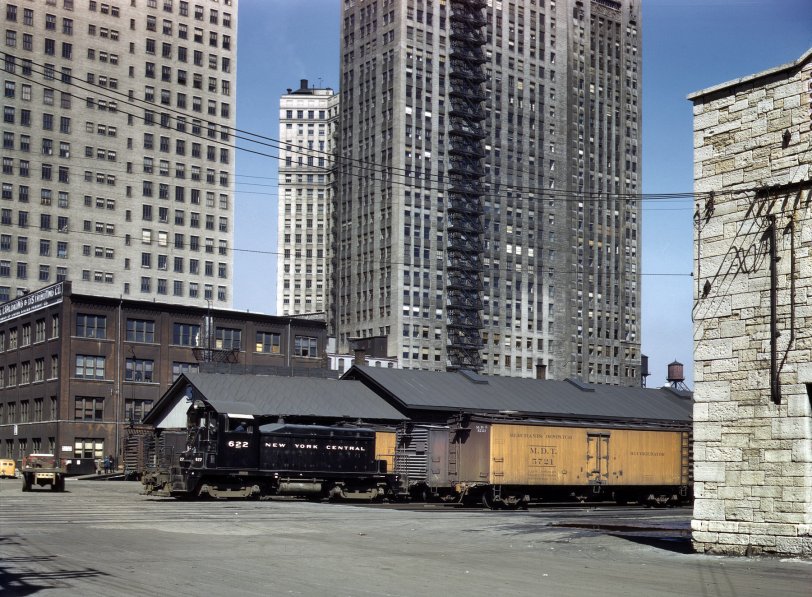Originally Posted by Jdevleerjr:
I want to include one on my layout. Are they usually close to passenger stations? What kind of cars did they service? REA freight on passenger trains? Box cars?
Express freight might be on a flat, but most often box cars. Built right onto most stops, freight is there, but might just be a shelter or a "block"*
What about a short line, small town station.
More likely to have a combo platform than a big city stop ,where part of a combo might be separated, and moved to a yard, or large freight area
Would it be prototypical for a passenger train to pull up to a station, and freight unloaded from the baggage cars as passengers in the coaches got on the train as others leave?
Yep. Don't forget the baggage porters too.
If you watch the background of old movies,(yes a movie, but it had to be "real" to the people of the time so...) you'll see crews waiting for a signal to approach the train. One guy almost always has a hand dolly . Often happens before the first passenger appears. As the crew disappears into the car, that view is usually filled with bag porters appearing, sometimes from those cars, and/or the conductor pointing, or checking the old watch
. Often happens before the first passenger appears. As the crew disappears into the car, that view is usually filled with bag porters appearing, sometimes from those cars, and/or the conductor pointing, or checking the old watch If a conversation persists, large crates usually begin emerging. ( And careful too. Those "brown shirts" playing football with our trains could learn something. They must all have been Italian. They seem to be able to understand FRAGILE just fine)(Oow! My eye
If a conversation persists, large crates usually begin emerging. ( And careful too. Those "brown shirts" playing football with our trains could learn something. They must all have been Italian. They seem to be able to understand FRAGILE just fine)(Oow! My eye )
) 
Large shipments, the cars would be cut loose for unloading. Where or if they got cut loose would depend on the time & station more than anything. Some stations had a freight siding around the back.
Up North in Mi. one, or two stations had two "freight platforms". One on either side of the passenger loading area. Some "half way" or "private stops" little more that "fruit stands" and heavy boards to unload with. I remember one like that on the old Mac line between Topinabee (which itself is smaller than mwb's model, or its prototype anyhow ) & Cheboygan. Also one near Twinsburg, or Aurora Oh I liked. Oh I remember a bunch in Canada too.
) & Cheboygan. Also one near Twinsburg, or Aurora Oh I liked. Oh I remember a bunch in Canada too.
*At the old home on the hill, in the yard on the NE corner of Dix & Outer Drive, Allen Park/Melvindale boarder, there is/was a flatbed truck sized, one pour, concrete block.
It was a freight drop (which my Gramps received a mill at in the 70s. The home owners permission was granted, and it was necessary to drive an electric forklift 2 miles there, recharge at the house, drive the mill the other way to a truck that had to do a 4 mile loop because Outer Drive is a "no load" road going east).
The arched door warehouses, South of the Detroit Post Office, on Fort Street, once had rails running there. The streets of Detroit actually had rails almost everywhere in the early 1900s. Traction companies everywhere. You'd be almost hard pressed to find a pre-war downtown street photo without some type of rails in the background.
Ann Arbor, in Corktown, "above" the park, along the river, is a very old depot with arched doorways & lots of double doors. Nicely maintained outside I think it was also a fruit market & a city storage facility at one time or another. (actually it looks very much like Andre's latest depot posts[the lazer etch guy]

















